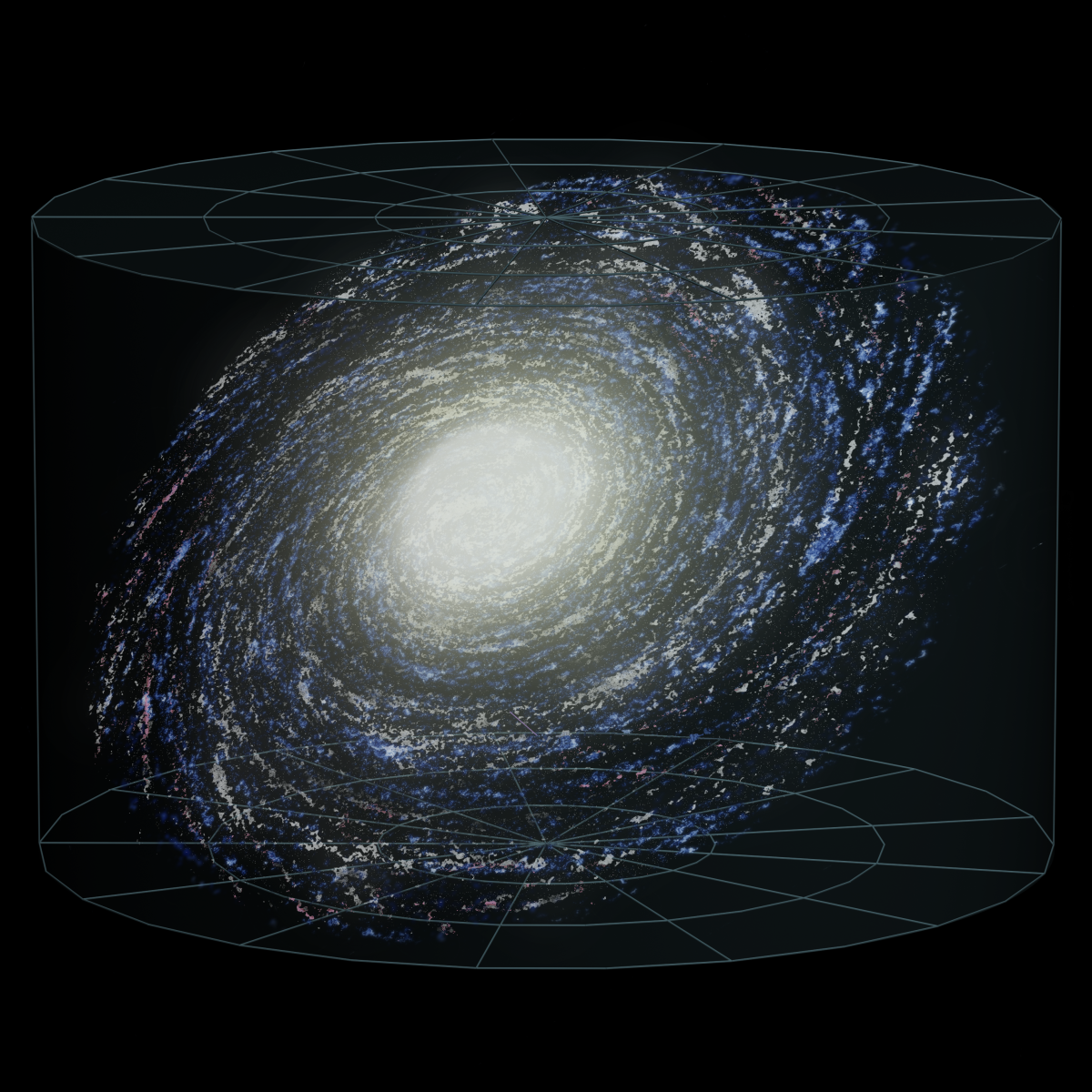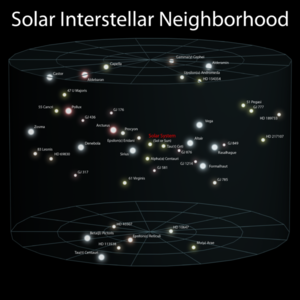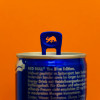Dark matter is a mysterious material that produces no visible light of its own, but which astronomers need to explain the tremendous speeds with which galaxies rotate.
 The problem is that galaxies rotate so fast that they would be pulled apart by centrifugal forces unless there was a strong inward gravitational force holding them together. The total mass of all of the stars in a typical galaxy is not enough, and so it is inferred that 90% of their mass must be in a dark form that we cannot see: dark matter.
The problem is that galaxies rotate so fast that they would be pulled apart by centrifugal forces unless there was a strong inward gravitational force holding them together. The total mass of all of the stars in a typical galaxy is not enough, and so it is inferred that 90% of their mass must be in a dark form that we cannot see: dark matter.
But how much dark matter is there in our own solar system, and could we detect it? We think there's actually very little, because dark matter is smoothly distributed throughout the galaxy, whereas planetary systems like our own are tiny condensations of matter -- a few lighthours across -- as compared to the vast distances of lightyears that separate neighbouring stars.
Whereas visible matter has collapsed down into stars and planetary systems, dark matter cannot do this as it involves losing gravitational energy -- by dissipating it as emitting light.
However, new calculations by Silvia Garbari of the University of Zurich and her colleagues have produced a new measurement of the dark matter density around our Sun and its immediate neighbours. The team modelled the movements of 2,000 nearby stars to understand how they are affected by the gravity of the stars and dark matter around them.
 Crucially, these stars are not static in the disk of the galaxy, but rather bob up and down in the disk. By looking at how fast they do so, the force pulling them back into the plane can be calculated.
Crucially, these stars are not static in the disk of the galaxy, but rather bob up and down in the disk. By looking at how fast they do so, the force pulling them back into the plane can be calculated.
The paper concludes that about 80% of the material around the solar neighbourhood is visible, and 20% of it is dark matter. This means, for example, that inside the Earth's orbit there is about 50 billion tonnes of dark matter. That's only as much as an asteroid measuring 1.5 miles across, of which there are many thousands in the solar system.
Nonetheless, it's more than some models had predicted. Not only is the Milky Way's dark matter smoothly distributed into stars, but it's also believed not to have collapsed into a flat disc like the stars, but rather have remained spherically distributed, thinning it out even further. Such a high density in the plane of the disk suggests that at least some of the Milky Way's dark matter has in fact concentrated in its disk.










Comments
Add a comment